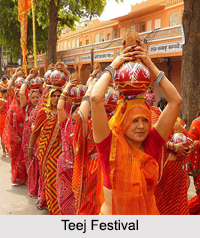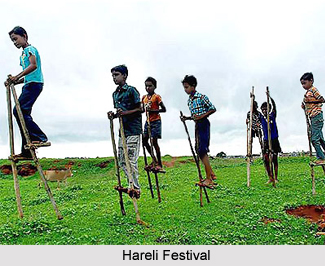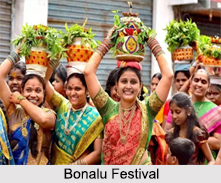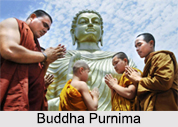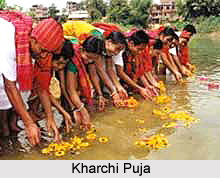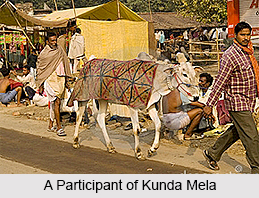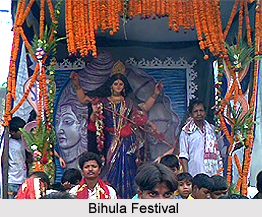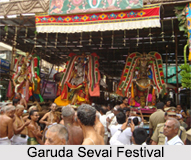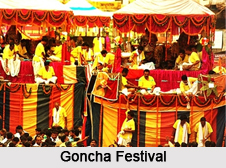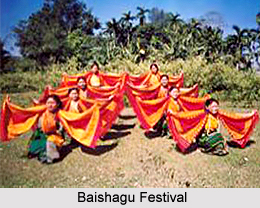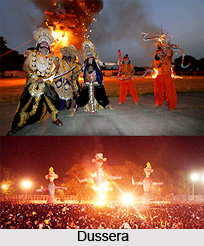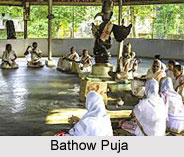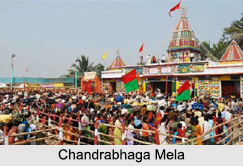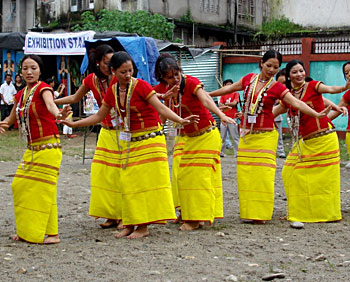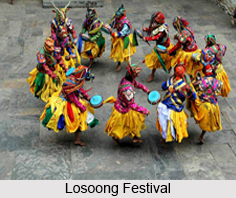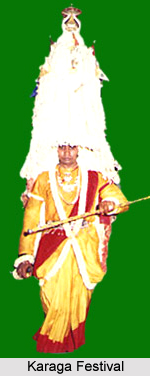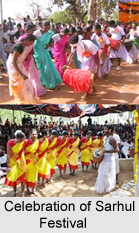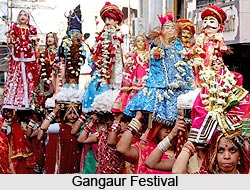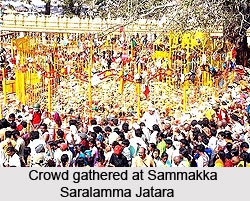 Sammakka Saralamma Jatara is one of the important tribal festivals of Telangana state of India. It is also called as Medaram Jatara and is held in the duration of every two years. It is organised at Medaram which is a small village in the district of Warangal. This 1000-year old festival is believed to be the largest crowd puller after Kumbha Mela. Around 10 million people gathered in 2012 commemorate.
Sammakka Saralamma Jatara is one of the important tribal festivals of Telangana state of India. It is also called as Medaram Jatara and is held in the duration of every two years. It is organised at Medaram which is a small village in the district of Warangal. This 1000-year old festival is believed to be the largest crowd puller after Kumbha Mela. Around 10 million people gathered in 2012 commemorate.
Celebration of Sammakka Saralamma Jatara
Based on the local belief, it is celebrated when the goddesses of the tribal visits them. The Jatra begins at Medaram which is around 110 km away from Warangal head Quarters and about 140 km from the State Capital Hyderabad. The aim of the festival is to honour the fight of a mother and daughter, Sammakka and Saralamma, with the reigning rulers against an unjust law.
As a part of ritual, the devotees offer bangaram of a quantity equal to their weight to the goddesses and take holy bath in Jampanna Vagu (stream). This tribal festival has no vedic or brahmanic influence.
As Medaram Jatara is a State Festival of Government of Telangana, it draws people from different states of India including Madhya Pradesh, Chhattisgarh, Odisha, Maharastra, Karnataka and parts of Jharkhand.
Until the year 1998, the only way to reach Medaram was by a bullock cart. Since it is a great crowd puller, the state government declared the festival as official and laid down a motorable road.
In the year 2008, the festival witnessed around 8 million people and in 2012 it saw an estimated 10 million people. This ancient fair is said to be the largest repeating gathering of tribal communities in the world.
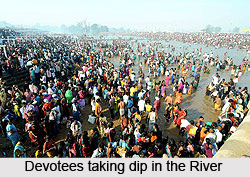 Legend of Sammakka Saralamma Jatara
Legend of Sammakka Saralamma Jatara
There are a number of legends associated with the origin of this festival. As per one story, about 6-7 centuries ago, few tribal people went for hunting and discovered a new born girl who was playing amidst tigers. She was also emitting enormous light.
Then the girl was taken to their habitation where the head of the tribe decides to adopt her. He brought her up as a chieftain who later became the saviour of the tribal of the region. She tied the knot with Pagididda Raju who was a feudatory tribal chief of Kakatiyas and who ruled the country of Andhra from Warangal City between 1000 AD and 1380 AD. The couple was blessed with two daughters and a son namely Sarakka, Nagulamma and Jampanna respectively.
Within a span of few years, the area faced severe drought so Pagididda Raju didn`t pay tribute to King Pratapa Rudra. As a result, King Pratapa Rudra sent his army to subdue the tribal and collect the tribute. This led to a war between tribal chief Pagididda Raju and Kakatiya army on the banks of "Sampenga Vagu".
The Koya army fought hard but failed to withstand the well equipped army of Kakatiya. In the war, Pagididda Raju, his daughters Sarakka, Nagulamma, and son in law Govinda Raju lost their lives. Later, Jampanna also dies in Sampenga Vagu.
Upon hearing this news, Sammakka stepped in the war to face the enemy. She fought and caused a lot of damage to the kakatiya army. Her tremendous bravery surprised the Kakatiya Prime Minister who offered peace and Sammakka a place in the emperor"s harem as the chief queen. However, Samakka turned down the offer and decided to continue the fight to avenge the dead. The war continued and Sammakka was seriously injured.
And with that injured body, she proceeded towards Chilakala gutta and disappeared in the forest however, she ensured her people that as long as they remembered her, she would protect them.
Later, the grieving Koyas searched for their queen but they could not found her except one container of vermilion, her bangles and the pug marks of a huge full grown tigress, exactly at the same place where she was found as an infant by the koyas. They thought these were her symbol. Since then the Koyas and other Indian tribes have been organizing festivals in the honour of Sammakka and Sarakka.
